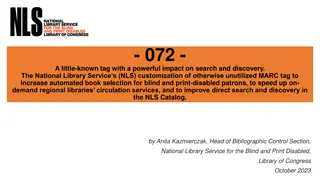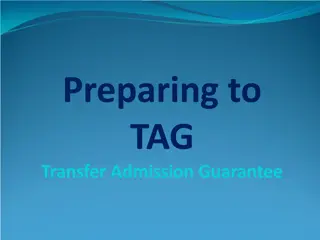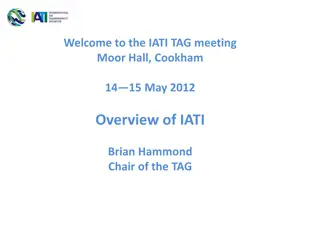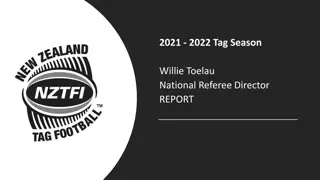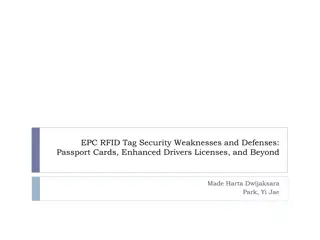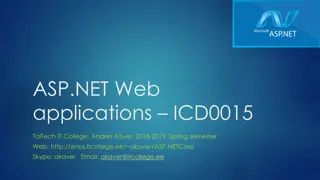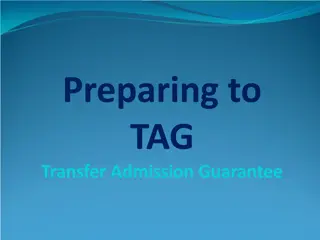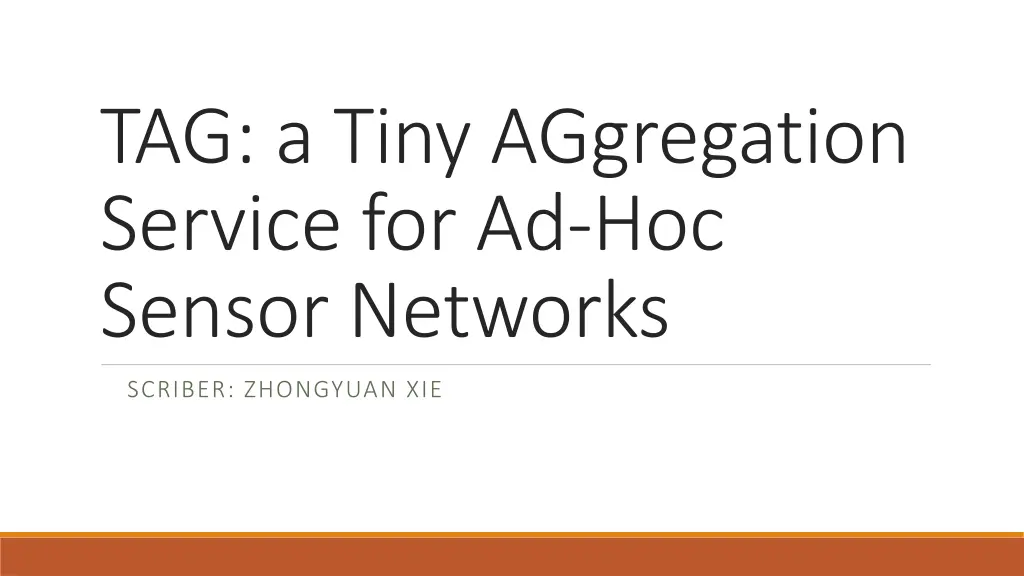
Tiny Aggregation Service for Ad-Hoc Sensor Networks Brief Overview
Learn about a Tiny Aggregation Service for Ad-Hoc Sensor Networks that efficiently handles data aggregation in low-powered ad-hoc sensor networks through a tree structure, highlighting its pros and cons along with insightful comments and questions.
Download Presentation

Please find below an Image/Link to download the presentation.
The content on the website is provided AS IS for your information and personal use only. It may not be sold, licensed, or shared on other websites without obtaining consent from the author. If you encounter any issues during the download, it is possible that the publisher has removed the file from their server.
You are allowed to download the files provided on this website for personal or commercial use, subject to the condition that they are used lawfully. All files are the property of their respective owners.
The content on the website is provided AS IS for your information and personal use only. It may not be sold, licensed, or shared on other websites without obtaining consent from the author.
E N D
Presentation Transcript
TAG: a Tiny AGgregation Service for Ad-Hoc Sensor Networks SCRIBER: ZHONGYUAN XIE
Brief Recap Service that handles the aggregation of low-powered ad-hoc sensor networks. Tree structure. Instead of transmitting all data to the datacenter, each mote summarizes the data from its children and passes the summary to its parent. The process contains distribution and collection phases. To reduce the impact of loss motes, child cache is used to handle non-responsive children.
Pros: Long sleep time per epoch means less energy cost Enormously decreases the numbers of messages sent comparing to centralized approach High level API makes the service non-trivial to non-programmers Usage of cache to store intermediate data in case of failure child Cons: Eviction will increase bandwidth Eviction may cause cascading Requirements of routing algorithm (tree based) The waiting time for each parent node is arbitrary and conditional Evaluation is very simulation based
Comments & Questions 1. The aggregation only works for tree-based routing scheme, can it be modified to fit other routing scheme? From the paper, TAG requires two preconditions: 1. Able to deliver query requests to all nodes in a network. 2. Able to provide one or more routes from every node to the root of the network where aggregation data is being collected and guarantee no duplicate message.
2.Could this idea be extended to multiple relation tables, with different types of sensors collecting different data for each table? Depending on the design of distribution and collection, partial state results have no attribute names. But it is possible if there is a table in the root that has the IDs of the sensors of different types.
3.What happens if more data needs to be returned than can be fit into one message? Since each node aggregates, it is almost impossible to happen based on the given commands available. In case multiple values need to be transmitted, eviction can handle the problem.

